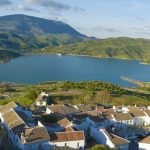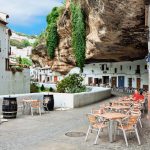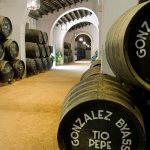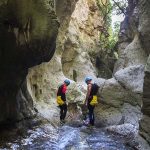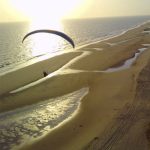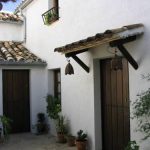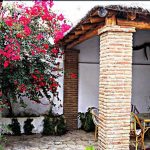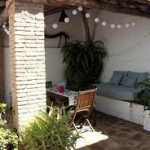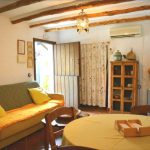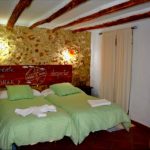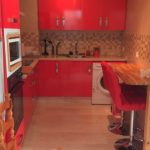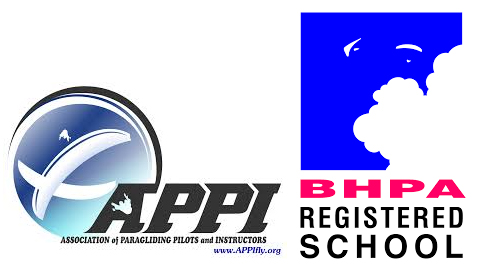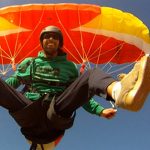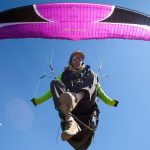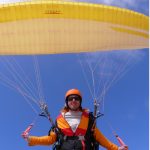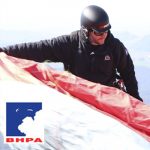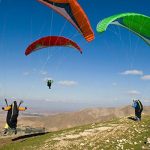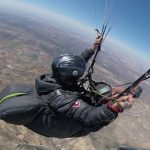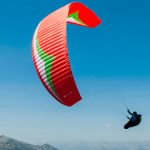Intensive Paragliding Courses for Beginners
If you want to learn to fly, the best way is probably to do an intensive course, since it is proven that you progress much faster than if you give your flight lessons in a discontinuous way only on weekends. Our intensive paragliding courses are one or two weeks long.
ZERO GRAVITY INTERNATIONAL PARAGLIDING SCHOOL
Learn to fly: steps to become a certified Paragliding Pilot
Paragliding is a potentially dangerous sport, so you shouldn't try to fly a paraglider without proper training. For your safety and the safety of the other pilots, your first step must be to enrol in a course offered by a certified paragliding school.
While attending a school, you will acquire the knowledge necessary to fly safely. Professional instructors will help you to become a safe, competent rated paragliding pilot. During your course, you will do some supervised flights and theory classes. At the end of the course, you must complete a written exam.
To become an autonomous paragliding pilot you need to complete these two courses:
IPPI 2 - BHPA Elementary Pilot Course
This is a course for complete novices and is the first step in getting qualified to paraglide. At the end of this course, you have learned the basics of paragliding but you still need to fly under the supervision of the instructor.
This course takes one week (6 days).
IPPI 3 - BHPA Club Pilot course
This is the next step in your career to become an autonomous paraglider pilot. Once you have finished this course you should have the skills you need to fly unsupervised.
This course takes one week (6 days).
Combined course IPPI 2+3 | BHPA Elementary & Club pilot
You can also complete the full training program in a Combined EP+CP course. This is the quickest way to learn to paraglide from zero to a qualified Club pilot that allows you to fly unsupervised.
This course takes two consecutive weeks (12 days).

REQUIREMENTS
COURSES FOR BEGINNERS
- You need to be over 16 years old.
- Your weight is under 120 Kgr.
- The briefings are in English or Spanish. You must understand at least one of these languages.
The IPPI 2 Elementary course is for absolute beginners, you don't need any previous experience in flight to attend this course.
To take the IPPI 3 Club Pilot course you must have previously taken the paragliding course IPPI 2 (or BHPA Elementary, or the APPI 2 Explorer, or any equivalent course), within the last 9 months.
Otherwise, you will need some refresher before you start; your instructor will evaluate your skills and basic knowledge on the first day of the course. Ground-handling: you must be able to inflate and control your wing on launch and make a simple flight before you start with the CP course.

INCLUDES
WE OFFER YOU IN THE PACKAGE...
- Accommodation in a single room.
- Free Transfers from/to Malaga Airport (*Saturdays at 13h00).
- The rent of the full flight equipment.
- Third-party & Accident insurance, with repatriation cover.
- Shuttle to the flying sites & retrieves: we can fly in more than 10 different spots. We don't mind moving to another area if it is necessary due to weather conditions.

INSURANCE
INCLUDED IN THE PRICE
Please read the coverage of our insurance.
Nevertheless, we recommend you have your own Travel Accident Insurance with full rescue/repatriation cover.
If you are a citizen of the EU, bring your European Health Insurance Card (EHIC). This entitles you to reduced-cost, sometimes free, medical treatment.
-
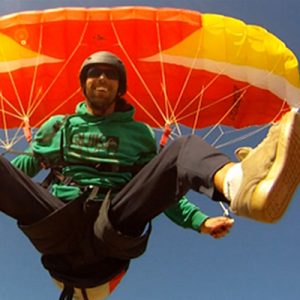 1.450€
Quick view
1.450€
Quick viewIPPI 2 Elementary Pilot Course
ALL INCLUDED PACKAGE Learn to fly. This paragliding course is the first degree in the education system. For beginners without experience. Duration: 6 days / 7 nights. ✅ All flying equipment 🔀 Insurances 🏠 Accommodation Included ✈️ Free Airport Transfers 🚩 Algodonales, SpainBooking -
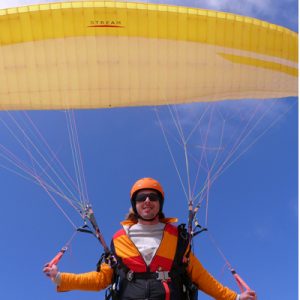 1.450€
Quick view
1.450€
Quick viewIPPI 3 Club Pilot Course
ALL INCLUDED PACKAGE Keep learning and become an autonomous qualified pilot. For beginners who have already done the IPPI 2 course. Duration: 6 days / 7 nights. ✅ All flying equipment 🔀 Insurances 🏠 Accommodation Included ✈️ Free Airport Transfers 🚩 Algodonales, SpainBooking -
Sale!
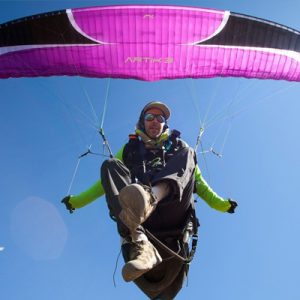
2.900€2.750€ Quick viewIPPI 2+3 Combined Course
ALL INCLUDED PACKAGE Learn to fly, from complete beginner to qualified pilot! For beginners without experience. Duration: 12 days / 14 nights. ✅ All flying equipment 🔀 Insurances 🏠 Accommodation Included ✈️ Free Airport Transfers 🚩 Algodonales, SpainBooking
Know more...
The traditional teaching method in paragliding is based on short flights from a low hill. The student doesn't have too much time to practice the exercises in flight and has to walk to the top of the hill over and over to try it again. These hops are good to make you more confident but, in the long run, they extend the time to develop your flying skills. It is also very demanding physically to hike to the top of the hill.
We can reduce this time with our system, combining dual flights with your instructor and solo flights.
Our Fast Learning System
ONE-to-ONE TANDEM FLIGHTS:
At the beginning, you will fly in a dual paraglider with your instructor from the top of the mountain (100-600 m high). During these approx. 20-minute-long flights, you will take the controls of the glider. You will have plenty of time to practice exercises, with the help of your instructor who will be seated behind you. This is the best way to learn, no doubt!
With this system, we also save time: you can fly with your instructor and practice more often and you won't be waiting for the light wind conditions.
We combine tandem flights with theory lessons and ground-handling practices until you are ready to fly in a glider all on your own.
SOLO FLIGHTS:
After three or four tandem flights with your instructor, you should be ready for solo flights! You will fly alone for the rest of the course, but always under supervision, with radio support.
Elementary Pilot Course (BHPA EP-IPPI 2) Syllabus
Phase 1 - Ground Training
- Introductory talk - risk warning health/medical conditions clothing/footwear - pilot rating scheme BHPA/APPI
- Site assessment - suitability for the exercises and the student and weather
- Introduction to canopy and equipment
- Avoiding/minimising injury - safety techniques
Phase 2 - Ground Handling
- Briefing - Checks - wind direction, airspeed control, flare/stall
- Preparation - Pre-flight Checks - paragliding helmet, harness, canopy.
- Inflation - Take-off - landing sequence practised - post-flight control.
- Directional control - how controls work, initiating turns, looking ahead.
Phase 3 - First Flights
- Getting airborne - take-off with good control of airspeed, in-flight control, landing and post-flight control.
- Eventualities briefing - preparation to deal with the unexpected.
- Commands and communications briefing.
- Responsibilities briefing - student becomes the pilot-in-command.
Phase 4 - Flight exercises in a Dual Tandem paraglider with your instructor
- Flights (1) straight flights maintaining course and airspeed, introducing turns
- Flights (2) Different kinds of turns, speed-to-fly, figure-of-8 approaching
- Flights (3-4) complete simple flight plans with controlled landings in the intended area.
Phase 5 Theory lessons and examination.
- Meteorology - the weather affecting our sport
- Principles of flight - how the wing flies, what makes it turn, stability etc
- Rules of the air and air law.
- Elementary examination - multiple choice written paper.
Student has reached a standard of airmanship and attitude to continue training in this discipline. Attitude is very important in the interests of safety of the student, fellow pilots and other Course Exercises
Final assessment of the Elementary stage. If successful you can then move on the Club Pilot IPPI 3 level.
BHPA Club Pilot Course (BHPA CP-IPPI 3) Syllabus
Phase 6 - Pre-soaring.
- Theory: Further weather and site assessment, soaring flight theory, lift bands, flight planning, and rules of the air.
- Demonstrate consistent competent unassisted launches and controlled turns up to 180 degrees and beyond.
- Planned Approaches: Demonstrate consistent competent controlled approaches (using different techniques) and landings in a designated area.
Phase 7 - Soaring.
- Soaring flight: Consistently using ridge lift to maintain and gain height.
- Top Landings: Demonstrate safe, consistent and controlled top landings on at least two sites or in different conditions [this task is optional].
- Flying with others: Consistent competence in flying with others, observing the Rules of the Air and Collision Avoidance Rules.
Phase 8 - Improving Skills.
- Exploring the speed range: Competence in using the speed range of the paraglider, and understanding the hazards including the stall.
- Accelerator Systems: Competence in using accelerator systems and knowledge of their use and related dangers.
- Forward Launching: Demonstrate consistent competence in forward launching skills, under full control throughout.
- Reverse Launching: Demonstrate consistent competence in reverse launching skills, under full control throughout.
- Weight-shift and pitch-roll coordination in turns: Demonstrate consistent competence in steering the glider with weight-shift and in controlling pitch.
- Cross-wind and slope landings: Demonstrate consistent competence in cross-wind and slope landings and understand when and how to use and associated hazards [this task is optional].
Phase 9 - Instability & Emergencies
- Theory: Tree and water landing procedures, Parachute Landing Fall competence, emergency parachute systems, alternative control systems and dealing with instability and turbulence.
- Active flying: Coping with turbulence, including pitch control.
- Rapid descent techniques: The use of the ‘big ears’ descent technique, including its limitations and hazards.
- Dealing with an asymmetric tuck: Demonstrate how to deal effectively with small tucks in flight.
Phase 10 - Theory & Exam
- Meteorology: More detailed knowledge of weather and conditions for safe flying.
- Principles of flight: Knowledge of how the wing flies; effect of controls; forces on a wing; stalls, spins etc.
- Rules of the Air and Airlaw: Airlaw in paragliding activities, including controlled airspace and essential liaison with other air users.
- General Airmanship knowledge: Including human factors, flying abroad, repairs, inspections, coaching and clubs.
- Theory Examination: Two multiple choice written exam papers. A wrong answer to ANY Collision Avoidance question means automatic failure of the entire exam.
Final Assessment. Assessment of student’s attitude and standard of airmanship to fly safely and competently outside the supervision of a school.
What is paragliding?
Paragliders look vaguely like parachutes as these are from where they evolved. However, they are very much more. Paragliding is now at a very exciting stage in its development, from being just a fun method of descent from the hills; Paragliding offers the pilot the sensation of true free flight for hours upon hours. Using modern high-performance materials a canopy only weighs a few kilograms and packs neatly into a rucksack. This makes this “aeroplane in a bag” totally portable and can complement other sports such as skiing and mountaineering.
In our paragliding school, you can be rated in one or more of these organizations.
- RFAE, is the Spanish Air Sports Federation
- APPI, is an Association of Paragliding Pilots and Instructors which Offers a worldwide united education system.
- BHPA, the British Hang Gliding and Paragliding Association, provides the infrastructure within which hang gliding and paragliding in the United Kingdom.
- FAI, the World Air Sports Federation, is the world governing body for air sports.
The FAI IPPI Card
If you like, after you have completed your course at our School, you can get the International FAI IPPI Card.
The CIVL International Pilot Proficiency Information (IPPI Card) reflects the pilot's proficiency and provides a standard reference by which all national rating programs may be compared.
For the pilot who flies outside of his known or local area, it is an easy method of providing proof of flying experience and proficiency. When a pilot travels abroad, the IPPI Card will identify the pilot's skills.
The IPPI Card is valid only together with a current national license. Our Paragliding school is recognized by the Spanish and by the British Federation. If you like, you can become a member of them with our certification.
If you don't live in Spain or the UK but want to join your country's federation, they should accept your IPPI Card as proof of your pilot rating.
The IPPI Card is based on safety and training standards defined in the SAFE PRO Courses:
The learning progression consists of five stages, from basic to advanced. It also divides the participants into students, who must fly under the supervision of instructors, and autonomous pilots who can fly unsupervised.
- IPPI 1. Student. Ground Skimming
- IPPI 2. Student. Altitude Gliding (altitude and space to do manoeuvres, no soaring)
- IPPI 3. Pilot. Active Flying (preparing for turbulence, recovery and descending techniques…)
- IPPI 4. Pilot. Soaring (flying in both ridge and thermal lift)
- IPPI 5. Senior pilot (mastering one or more advanced practices)
Here you can compare the equivalent ratings between FAI IPPI, APPI and BHPA:
| FAI. International | APPI. International with exceptions | BHPA. For UK citizens |
|---|---|---|
| IPPI 1 Ground Skimming | APPI 1 Discover | Student |
| IPPI 2 Altitude Gliding | APPI 2 Explorer | Elementary Pilot |
| IPPI 3 Active Flying | APPI 3 Pilot | BHPA Club Pilot |
| IPPI 4 Soaring | APPI 4 Intermediate Pilot | BHPA Pilot |
| IPPI 5 Senior pilot | APPI 5 Advanced Pilot | BHPA Advanced Pilot |
Do I need a license to paraglide?
In most countries, a license is not required to paraglide, but there are some countries where you must get a paragliding pilot rating to fly.
Paragliding is normally regulated by the National Aerial Federation. It is a self-regulated sport; pilots and instructors alike adhere to the policies and guidelines of the Federation or another Association.
You should ask the National Federation about the requirements to fly paragliders in the country.
Am I too old to learn to paraglide? How fit do I need to be?
It’s not so much about how old you are, it is more about your general level of fitness, health and mental state.
Although no medical examinations are officially required to learn to paraglide, you should be in generally good health. You should be fit and active and have good coordination. You must be able to run a bit for around 5-15 meters on take-off and landing and you could be walking up hills carrying a 15-20kg rucksack full of paragliding equipment.
If you suffer from any medical condition such as epilepsy, giddiness, heart condition, osteoporosis or diabetes you should ask your doctor’s advice before taking part in a paragliding course.
The student's maximum weight must be 120 Kgr.
Learn to paraglide in the sunshine of Spain

ALGODONALES, SPAIN
FLY WHERE THE SUNSHINE!
WHY YOU SHOULD CHOOSE SPAIN?
- Because we have the best climate conditions for paragliding the whole year round.
- Because we variety of flying spots, on mountains, hills and coastal dunes.
- Because you will take advantage of the good weather and you will have more chances to complete your course in a shorter time than in other countries where it could take months.
- And it is not only about flying but you will enjoy the culture and real people of Spain.
Click on the upper tab to Know more...
In Andalucia, even in Winter, while the rest of Europe is frozen, we can fly at 20ºC. The Winter here is not cold and there are smooth thermal conditions. It could rain, but generally not too many consecutive days. In the Spring and Autumn, the good thermals offer high and long-distance flights, and the temperature is perfect. In Summer it is hot (very!) but we enjoy smooth flights during the long evenings until sunset.
The mountains around Algodonales have a wide variety of flying spots and the coast is just one hour away and offers two other easy coastal flying sites above dunes.
You can take advantage of these good weather conditions and you will have more chances to complete your course in a shorter time than in other countries where it could take months. It is likely to be more cost-effective to take a holiday with us compared to travelling back and forth to your local paragliding area.
Despite Algodonales is not a big town, you will find all you need for a comfortable holiday: there are supermarkets, local shops, several banks with cash machines, pharmacies and a health centre.
The village is full of restaurants and cafes, and they are open from early morning to midnight: you cannot miss tasting the fantastic local food and tapas at low prices: coffee or beer from 1.2€, tapas from 2€ and a daily menu by only 8-10€.
Algodonales is also ideally situated for visiting the surrounding great cities and sights of interest such as Ronda, Grazalema, Sevilla, Granada, Cordoba, Cadiz, Jerez de la Frontera, Costa de la Luz and Costa del Sol.
PLAN YOUR TRIP TO SPAIN
We cooperate with local hosts and we will make a reservation for you: a single private room in a self-catering house shared with other pilots. All the houses have wifi, bed sheets, towels and kitchen facilities. They are located in the centre of the village and a few minutes walk to restaurants, shops and our Flight Centre. If you require accommodation for couples or families please get in touch and we can arrange this. If you don't need an accommodation or you wish to arrange your own accommodation please let us know: we will give a discount of 175 euros per week on your final price. The dates of your booking are starting and finishing dates. You should arrive on the day before the starting date, at any time, and depart on the day after the finishing date. i.e. If your reservation is Sept 22th - Sept 27th you should arrive on the 21st. We start on the 22nd morning and finish on the 27th evening. You must check-out on the 28th. The shuttle service departs from Malaga airport on the arrival date (the day before the starting date, normally on Saturdays) at 13:00 h, and arrives at Algodonales approx. at 15:00 h On the check-out day (the day after the finishing date, normally on Saturdays) the shuttle departs from Algodonales approx. at 10:30 h and arrives at Malaga airport at approx. 12:30 h Please keep this time in mind when you book your flights. RENT A CAR: Hiring a car could be the best option and sometimes is cheaper than taking a bus. There are several Rental Car Companies in the airports which offer very good prices. You can find cheap offers on their websites. Please check the fuel policies (we always recommend full to full) and insurance options/costs for deposit or top-up insurance policies. TAXI: There is a taxi service at Algodonales and they offer the airport shuttle. The price from Malaga or Sevilla to Algodonales is approx. 120€. Sometimes, there are more people taking the same taxi and you can share the price with them. Ask for sharing the taxi when you make your booking. You can also take any other taxi at the airport, but ask for the price first!; it will be often much much expensive than the local taxi. You can book your taxi here: Algodonales Taxi driver's contact phone number: +34 695 39 66 34 (WhatsApp available) BUS: There are Bus Companies that make the route to Algodonales from Malaga or Sevilla. You may take a bus or a taxi from the airport to the main Bus Station in the town, then take a bus to Algodonales. If you can't find a direct line to Algodonales you can try to Ronda or to Olvera, which are close to Algodonales and change to another bus to Algodonales. Malaga Bus Station (Paseo de los Tilos, s/n. 29006 Malaga, Spain). Website: http://estabus.malaga.eu/ Sevilla Bus Station (Plaza Prado San Sebastián, s/n. 41004 Sevilla, Spain). Algodonales Bus Station: https://www.algodonales.es/algodonales/autobuses-y-taxi
ACCOMMODATION
INCLUDED IN YOUR PACKAGE

NEAREST AIRPORTS
WHERE AND WHEN TO ARRIVE AND DEPART?

AIRPORT SHUTTLE
FREE AIRPORT TRANSFERS

HOW TO GET HERE
OUR ADDRESS: Calle Ronda, 10. Algodonales. 11680. Spain
Frequently Asked Questions
Breakfasts and other meals are not included in the prices. Our paragliding school is recognized by several associations and federations (APPI, BHPA, FAI, RFAE). This means that you will qualify for a paragliding license with them upon completing your course with us. The fee to join any of these organizations is not included in the price of the course. Joining a federation is not mandatory, but recommended if you like to get a license. Paragliding is weather dependent activity so we have to be flexible when making plans. We try to seize the time to optimize the training practices, but on a normal day you can expect the following plan: We start at 9:30h with theory lessons at the school, and there is a briefing with the students, pilots, and instructors around 10:30h. After the daily briefing, we go flying. We provide transport to the flying sites; you don't need to drive your own car. The flight sites are around 30 minutes to one hour by car from Algodonales. Some days, if the weather is not good for flying in our area, we move to a different flying site; this could take one or two hours by car. If the conditions to fly are good, we can spend the whole day flying in the mountains (or the coast), up to sunset. But if part of the day is not good for flying we can organice theory lessons, ground-handling practices or just time off for you to relax or for visiting the areas around. We normally have a pack-lunch with us, but if there is a time we prefer to have lunch in a local restaurant to taste real Spanish food. On our return to the town, most of the people like to have dinner together. In the case of bad weather, we spend more time in theory lessons and we can organize an alternative activity for the group, or anyone can do whatever they want, such as a tourist tour, hiking,… or just resting for the next day. Pack adequate comfortable clothing: warm clothes if your course is in winter. You will need a jacket in spring; it can be cold at the top of a mountain. Bring walking boots (ideally with ankle support), a sun hat, sun cream, sunglasses and also a swimming costume as there is a lake that you can canoe or swim. For students enrolled in a beginner's course, a long-sleeved t-shirt is a good idea for ground-handling practice. Long pants will avoid scratches on your legs. We provide towels in accommodation. Bring your reusable bottle and help reduce single-use plastic. There are good water fountains here and you can also refill your bottle from the tap. Beginners Paragliding courses: Max. 6 students in a group with 2-3 instructors. Guided tours: Max. 8 pilots per instructor. XC Camps: Max. 8 pilots per instructor, and a driver who tracks the pilots with GPS. Only the students signed up for any of our beginner's courses have basic accident and third-party insurance included in the price. Anyway, buying your own accident and travel insurance is recommended. Read here the terms and conditions of the accident insurance. Qualified pilots signed up for holidays or tours should have their accident insurance, and full rescue/repatriation cover – specific to paragliding. For citizens members of the EU, the European Health Insurance Card (EHIC) entitles you to reduced-cost, sometimes free, medical treatment that becomes necessary while you’re in a European Economic Area (EEA) country or Switzerland. EHIC full info here. You can be sure that we never give up! If the weather is bad in our area, we are going to move to a different one, with better weather. There are more than ten different flying spots up to 150 km around Algodonales, at the coast or inland. The bad weather days can be also used for ground-handling practices or for theory lessons, and not only for the students but we also organise masterclasses for more experienced pilots. If some tasks of a course are not completed, because of bad weather, it is possible to complete them on a different day. Some people extend their days. Some people prefer to stay in the area for a few more days so they have more chances to complete the course or to fly and, in any case, they can spend this extra time on tourism. Anyway, in the very unlikely event that due to bad weather, we have to cancel some days during a weekly course or tour, we will give you credit that will be discounted from the price of your next booking with us. All are welcome. Algodonales is a beautiful area; There are massive amounts to keep everyone busy while you are flying. horse riding to kitesurfing. picnics & canoeing and beautiful white hillside villages of Andalucia, everything is out there to do and explore. We can organise tandem flights for non-flyers. They will need a car because we cannot guarantee a place for them in our vehicle. In the rare event of bad weather and the inability to fly, we have some alternative activities to keep you entertained: Touristic Routes, throughout typical white villages all over the Sierra, with visits to museums, Natural Parks, Gastronomic Stops,… You don’t. We provide transport to flying sites and for the retrieve. But if you want, you can hire a car to visit the surrounding areas, for your non-flying partners or if you cannot take on time our airport shuttle. Our shop is fully stocked with all the equipment you may wish to purchase for flying and all at good Spanish prices. If you are interested in buying a glider please contact us in advance due to it could take weeks to get the items here.
Restaurants and shops at Algodonales are not expensive. The accommodation has a shared kitchen with all facilities, so you can also cook your own food if you wish.
Visits to the nearest cities: Cadiz, Sevilla, Ronda, all of the great tourist interest.
Archeologic tours. In the nearby areas, there are many remains of ancient cultures such as Phoenicians, Romans, Moors…
Trekking: There are a lot of routes through Grazalema’s Natural Park with amazing landscapes, animals and forests.
Mountain bike: You can hire bikes to cross the routes through the Natural Park. One of which is an old disused railway with tunnels, bridges, stations,… and of course, always a restaurant to end your ride!
Canoe: You can also rent canoes enjoying the nearby lakes of Zahara.

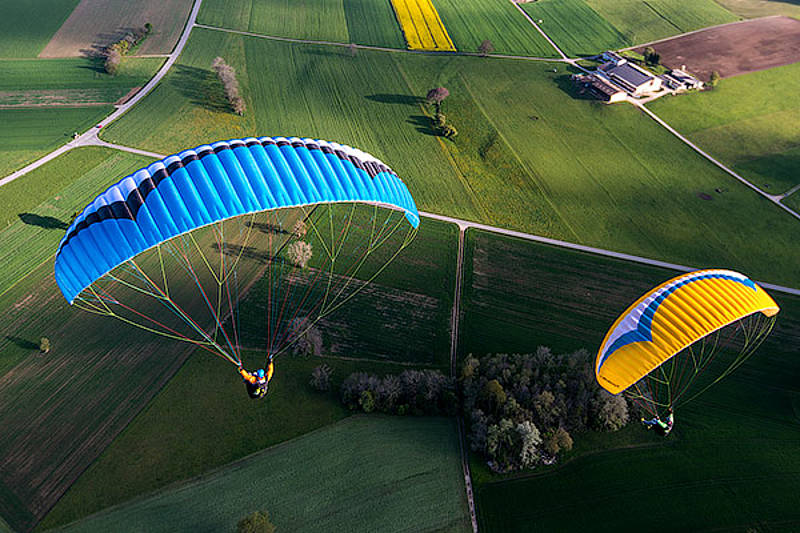
 Our paragliding school is approved by FAI, RFAE, APPI and BHPA: we can certify and apply for licenses recognized in most countries.
Our paragliding school is approved by FAI, RFAE, APPI and BHPA: we can certify and apply for licenses recognized in most countries.